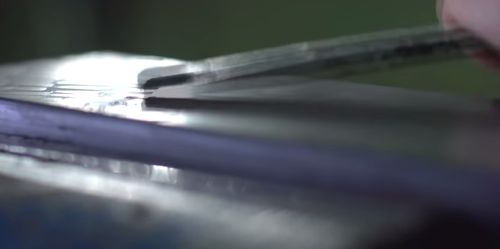Secrets to the Art of Hand Scraping
Hand scraping of mating surfaces on a machine tool enables the surfaces to be flatter, more accurately aligned, longer wearing and freer to glide across one another. No automated or mechanical operation can match these benefits. Machine builder Okuma explains how this seeming paradox is true.
Share






Watch this video for a demo of the hand scraping process, and find a link below to a white paper on the topic.
Hand scraping of mating surfaces on a machine tool enables the surfaces to be flatter, more accurately aligned, longer wearing and freer to glide across one another. No automated or mechanical operation can match these benefits. Machine builder Okuma has issued a white paper detailing the benefits of hand scraping, at technique it applies to all of its machines.
The company contends that hand scraping maintains high levels of CNC machining accuracy and reduces wear and tear, resulting in a long, stable and productive life for the machine. This manual process ensures that tight tolerances are consistently maintained and that precision CNC machining performance is sustained for years, therefore yielding the lowest cost-per-part, the company says.
In a nutshell, the hand-scraping difference accounts for four main benefits.
- Accuracy - Scraping is done to align components within millionths of an inch, allowing for consistently-held, tight tolerances.
- Flatness - Contact points prevent rocking, add balance when tightening, and allow for true flatness in parts.
- Oil Pockets - Oil on the surface allows gliding motion.
- Appearance - The finishing touch of scraping is aesthetic. Parts are “design scraped” to achieve an attractive textured finish.
To download a copy of the white paper, click .

Related Content
-
Quick-Change Tool Heads Reduce Setup on Swiss-Type Turning Centers
This new quick-change tooling system enables shops to get more production from their Swiss turning centers through reduced tool setup time and matches the performance of a solid tool.
-
6 Machine Shop Essentials to Stay Competitive
If you want to streamline production and be competitive in the industry, you will need far more than a standard three-axis CNC mill or two-axis CNC lathe and a few measuring tools.
-
Ballbar Testing Benefits Low-Volume Manufacturing
Thanks to ballbar testing with a Renishaw QC20-W, the Autodesk Technology Centers now have more confidence in their machine tools.
















